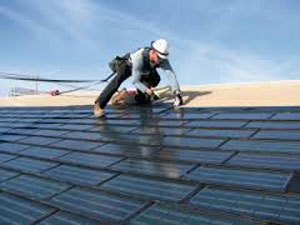Attic Ventilation
Poor attic ventilation can cause a number of problems — including premature aging of the roof. During the summer months, the temperature in an attic without proper airflow can hit 160 degrees. Such superheated air can penetrate attic insulation, making it harder to keep the home cool and even damaging wallpaper and paint on the floor directly below.
Up on the roof it can “fry” your shingles, making them decay more quickly — and the rafters holding up the roof can be weakened by warping and cracking. In the winter, various household appliances, bathtubs, showers and cooking vapors can contribute to excess moisture build up. Improperly ventilated attics will allow this moisture to collect and cling to the underside of the roof. There, it will condense and fall, soaking the attic insulation and reducing its efficiency. Air circulation in the attic is based on a balance between air intake vents in the soffits and air exhaust at or near the roof’s peak. The Federal Housing Administration recommends a minimum of at least 1 square foot of attic ventilation (both intake and exhaust) for every 300 square feet of attic space. For example, if your attic is 900 square feet, you need a total of 3 square feet of ventilation. This amount is generally divided equally between intake and exhaust ventilation to ensure proper air flow through the attic.




